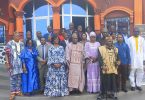Women play a crucial role in driving sustainable development across Sub-Saharan Africa. Their contributions span various sectors, from agriculture and education to healthcare and entrepreneurship. However, despite their significant potential, women in the region continue to face systemic challenges that hinder their full participation in the development process. This article explores the pivotal role of women in sustainable development, the challenges they face, and the opportunities for advancing gender equality and economic growth in Sub-Saharan Africa.
The Role of Women in Sustainable Development
Women are central to achieving sustainable development goals (SDGs) in Sub-Saharan Africa, especially in agriculture, where they constitute a significant portion of the workforce. Women represent about 36% of the global agricultural workforce, with their contributions particularly prominent in Sub-Saharan Africa, where they account for 50% of the agricultural labour force. They are predominantly responsible for time-consuming and labour-intensive tasks, acting as farmers, workers, and entrepreneurs. However, they face severe gender-specific constraints that reduce their productivity and limit their contributions to agricultural production, economic growth, and the well-being of their families, communities, and countries. Despite their critical role, patriarchal family structures across the region often perpetuate gender inequalities, with men dominating family and political leadership, moral authority, social privilege, and control of property.

Conversely, women often operate behind the scenes, balancing their agricultural work with essential but unrecognised and unremunerated activities at home. Their participation in rural labour markets varies, but they are overrepresented in unpaid, seasonal, part-time, low-skilled, and labour-intensive tasks, such as producing crops, tending animals, and processing food.
Women’s challenges are further compounded by limited access to productive resources, advisory services, and agricultural technologies, which restrict their capacity to invest in and benefit from climate-smart agriculture (CSA) practices. In certain socio-cultural contexts, women are not even recognised as farmers, leading to a lack of tailored services and technologies. This gender gap increases their vulnerability to environmental and social changes, exacerbated by climate change, which disproportionately impacts women due to existing inequalities (Azong et al., 2018). Although CSA has the potential to reduce women’s labour burdens and improve resilience, its success depends on addressing these gender-specific barriers and ensuring women’s active participation in decision-making. However, current approaches to CSA often oversimplify the complexities of household dynamics by focusing solely on comparisons between male- and female-headed households, overlooking the nuanced roles women play in dual-adult households and farm-management systems. Therefore, it is essential to design and promote more gender-inclusive and context-specific strategies to unlock the full potential of women in driving sustainable development in Sub-Saharan Africa.

In the education sector, women are both educators and advocates for change. Educated women are more likely to invest in their children’s education, leading to a generational impact on literacy and economic empowerment. Education has long been recognised as a powerful tool for transforming societies, especially in regions plagued by poverty and inequality. The Millennium Declaration, adopted by world leaders in 2000, doubled down on the importance of education by setting ambitious goals, including achieving universal primary education and promoting gender equality by 2015.
Despite these efforts, progress toward these goals has been slow, particularly in Sub-Saharan Africa, where millions of girls remain out of school due to entrenched poverty and marginalisation. The Food and Agriculture Organization highlights that in Sub-Saharan Africa, 24.4 million girls are still out of school, with only 66% enrolled in primary education and an even lower 24% in secondary education. This gap in educational access is a significant barrier to achieving the broader development goals, including poverty reduction, improved maternal health, and combating HIV/AIDS. Studies have consistently shown that educating girls leads to multiple positive outcomes: girls who complete primary and secondary education tend to marry later, have fewer children, and earn higher wages, contributing significantly to their communities and economies. Moreover, education has been described as a “vaccine” against HIV/AIDS, as educated women are less likely to contract the virus, with substantial differences in infection rates observed between educated and non-educated women in countries like Zambia.
However, the barriers to girls’ education are not only financial but also deeply rooted in gender inequality. In many Sub-Saharan African countries, girls are often forced to drop out of school to engage in low-paid or exploitative work, or even early marriage, further perpetuating the cycle of poverty. The international community has repeatedly emphasised the need for greater investment in girls’ education, yet there remains little consensus on how to achieve this at scale. The Tanzanian government’s Primary Education Development Plan, launched in 2002, is a successful example of increasing educational access without compromising quality, with net primary school enrollment rising from less than 60% in 2000 to 96% in 2006. This example was a testimonial for long-term educational planning and investment to achieve sustainable development. For the MDGs and broader development goals to be realised, it is crucial to keep girls’ education at the forefront of policy planning, ensuring that no child is left behind and that all can contribute to the future of their communities and countries.
Similarly, in healthcare, women often serve as caregivers, nurses, midwives and community health workers, playing a vital role in improving health outcomes at the grassroots level. However, despite their vital contributions, few women occupy leadership positions within the healthcare sector due to prevailing gender dynamics, which include biases, stereotypes, and discriminatory practices. The COVID-19 pandemic has exacerbated these inequalities, disproportionately affecting women and girls, especially those in the informal sector, which women dominate. Many have faced job losses, increased unpaid care work, reduced access to healthcare, and heightened incidences of sexual and gender-based violence. Despite these challenges, global initiatives such as the Beijing Declaration and Agenda 2030 have made strides toward gender equality, promoting full and productive employment, decent work for all, and non-discriminatory policies for sustainable development. Initiatives like affirmative action in education across Kenya, Tanzania, and Uganda, as well as the African Union’s Agenda 2063, have significantly increased girls’ participation in science, technology, and innovation (STI). However, the growth of women in healthcare leadership remains limited, largely due to entrenched patriarchal attitudes, poor funding, and social and cultural norms that continue to hinder progress.
To advance women’s roles in healthcare leadership, existing legal and policy frameworks need urgent review to promote equality, diversity, and inclusion. Enhancing girls’ education, supporting healthy work environments, and fostering continuous professional development are essential steps. Moreover, addressing biases in the recruitment, reward, recognition, and retention of women in leadership is crucial. Social norm change must be central to these initiatives, requiring advocacy, training, and strong partnerships between civil society, political, and cultural leaders. Mentorship programs like Project Girls for Girls provide career support and encourage greater female participation in STEM careers. Developing a monitoring and evaluation framework to track women’s contributions to global health leadership is necessary to ensure progress. Lessons from successful initiatives, such as the South African Medical Research Council’s stratified grant offerings, demonstrate the positive impact of targeted support for women in the health sector. While challenges remain, levelling the playing field for women in global health leadership is crucial for improving health outcomes across Africa, ultimately contributing to a more diverse, equitable, and inclusive world for all.
Opportunities for Empowerment and Growth
Investing in women presents a multi-trillion-dollar opportunity for economic growth in Sub-Saharan Africa. A McKinsey study estimates that closing the gender labour gap could add up to $28 trillion to global GDP by 2025, equivalent to the combined economies of China and the US. Despite persistent structural barriers, such as unequal land rights that hinder women’s economic participation, African women are major contributors to the continent’s entrepreneurial landscape. In Sub-Saharan Africa, over 44 million micro, small, and medium enterprises (MSMEs) are female-led, which contrasts starkly with Europe, where female entrepreneurial activity stands at only 5.7%. However, women entrepreneurs across the continent face a $42 billion shortfall in financing, with agriculture alone having a $15.6 billion deficit.
Women are also the primary decision-makers for 89% of household purchases in Africa, underscoring their substantial economic influence. Bridging the gender divide in key sectors like water, telecommunications, and healthcare could increase Africa’s collective GDP by 10% by 2025. The female economy, which encompasses women in business, the value chain, and the community, is poised to be a pivotal catalyst for future growth across Africa. Gender-lens investing (GLI) has gained traction as a strategic approach, with initiatives like the 2X Challenge, which exceeded its target by driving $16.3 billion in gender-lens investments between 2021 and 2022. These investments benefit businesses across Africa and other developing regions, underscoring the importance of women’s economic empowerment in sustainable development. The growing focus on GLI, particularly within the private equity sector, highlights the immense potential for driving economic growth through gender equality.
Conclusion
Women are indispensable to achieving sustainable development in Sub-Saharan Africa. By addressing their challenges and harnessing their opportunities for empowerment, the region can accelerate progress towards its development goals. Ultimately, the success of sustainable development efforts in Sub-Saharan Africa hinges on women’s inclusion and active participation in all spheres of society.








